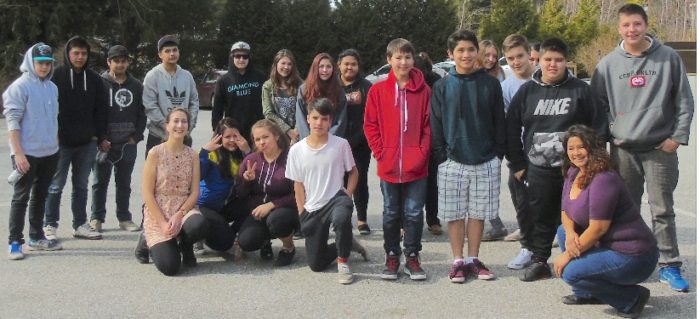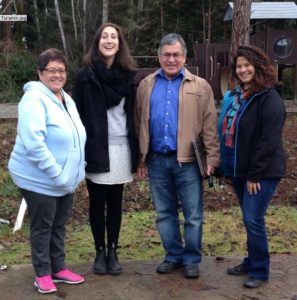Tla’amin, UBC students prepared the ground
By Grace Adams, Shauna Johnson and Kelsey Taylor
On April 5, Tla’amin Nation once again became self-governing.
Self-governance requires a lot of planning work, so to assist, Tla’amin hosted twoMasters students, Shauna Johnson and Kelsey Taylor, leading up to effective date. They were from the School of Community and Regional Planning (SCARP) at the University of BC.
The school offers a specialization in Indigenous Community Planning. In their second year, pairs of students are partnered with a host First Nation for an eight month practicum.
The Tla’amin partnership began with the students’ first trip to the community last September to meet the nation’s planning team and discuss their needs as they prepared for self-governance.
The students worked collaboratively with the Tla’amin planning team, developing a learning agreement that provided a framework for working together, guided the relationship-building process and identified mutually agreed-upon deliverables. Relationship-building is a key aspect when working in Indigenous communities to support, acknowledge and respect Indigenous ways of planning.
A planning process was co-designed based on three planning pillars:
- Tla’amin comprehensive community plan (CPP) reflection;
- Tla’amin Hegus youth strategy; and
- Tla’amin self-governance visual communication tools.
It was powerful to bring community together during this process. For the youth strategy, we facilitated youth workshops and brought youth and elders together.
Grace, a member of the planning team, observed how important this was. “Having an elder in the room is very grounding. It slows things down and returns us to our teachings through song and story.”
Reflecting on the CCP brought community members together in an open house in March, where Tla’amin community members discussed issues relating to youth and self-governance and viewed the communication tools.
The practicum partnership provides an opportunity for the community of Tla’amin to celebrate and build upon their accomplishments in the Tla’amin CCP, with reaching self-governance as their successful goals met. The youth strategy developed in this practicum provides a solid foundation to give youth a voice now and into the future.
“What do we need to do? They’ve [Tla’amin youth] got to start thinking, right now, because they’re the future – they’re the ones that are going to look after the future of our land.” – Elder Elsie Paul
More information about the UBC program is at icp.scarp.ubc.ca





